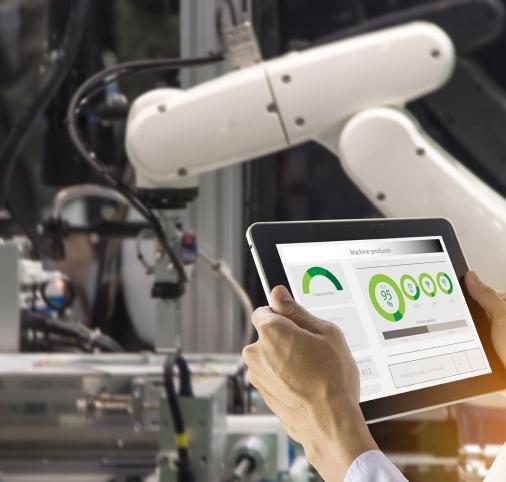Why Predictive Shopping Is Going to Dominate Retail in 2022
Check how Amazon predictive ordering works and
why predictive shopping is a big thing in modern retail.
Consult with a DataOx expert
as to the data for your predictive shopping.
Ask us to scrape the website and receive free data sample in XLSX, CSV, JSON or Google Sheet in 3 days
Scraping is the our field of expertise: we completed more than 800 scraping projects (including protected resources)
Table of contents
Estimated reading time: 4 minutes
Introduction
Markets have always been shaped by consumers and, in recent years, by technology as well. What is more, at present, the market forces shaping the competitive landscape have gained more importance. The coming of the global pandemic and the changing barriers to entry, regulation, or trade policy are the most vivid examples of market forces with a huge potential to significantly disrupt the status quo.
So, now the retail industry is mainly concerned with predicting the future and gaining clients most effectively. The best way to cope with the challenge is to look deeply into the data with the help of predictive analytics, then knowing the trends and the macro forces that are fueling the industry, you can use it to your benefit for predictive shopping.
Predictive Shopping: What Is It?
The smart combination of data collection and analysis with the help of artificial intelligence and machine learning technologies can help predict future results and provide a brilliant opportunity for retailers to tap into the market like never before.

Thus, a theory of predictive shopping has emerged, meaning that a customer can get the desired item even before he has thought about it.
But how?!
It’s simple: with the help of a client’s purchase history, their shopping patterns, and the levels of certain products’ supply and demand, you can predict the client’s next purchase.

By the way, Amazon predictive ordering system has even been patented and first heard of back in 2014. However, predictive shopping is still going to become a big thing in retail.
Why Is It a Big Thing in Retail?
More and more retailers realize the might of data and big data and the new technologies.
The brands are in the continuous battle for customers’ attention, while the consumers are shorter and shorter of time.
Obviously, convenience is the key factor that beats the rivals in such a highly competitive scenario, and predictive shopping is what can bring it to the table.
It’s now even strange to hear, but once predictive analysis was heavily criticized and considered something like a magic trick. It has already proved to be an important asset in retailers’ arsenal that helps minimize the risks and uncertainties associated with any market scenario.
Predictive analysis nowadays rules the multi-billion dollar market and is widely used worldwide by retailers aiming to gain a competitive edge and a considerable market share.
The major ways to use predictive analysis in retail
- To improve customer engagement, predictive analysis is able to inform a retailer about the most likely step a customer might take. The prediction is formed by purchasing patterns and history tracking as well as browsing patterns, and other forms of engagement. Then with personalized offers, you might increase sales up to 45%.
- To make better target promotions, it lies in the domain of predictive shopping as well. Through insights into the target audience preferences, you can craft marketing campaigns that target exact shoppers and even create a message for a particular customer to target every person in real-time.
- To allow a predictive search for the site users. Since a user-friendly experience often plays a decisive role in the consumer interaction with the brand, a predictive search feature can forecast what a customer is searching for, even when a few letters are typed in the search bar.
- To optimize prices — the sale of a product and consequently the profit is determined by the set price. With the help of predictive analysis, a retailer can analyze old prices, competitor prices, inventory, consumer interests, and margin targets to set the optimal product prices. Amazon predictive ordering use algorithms for this purpose.
- To realize smart predictive inventory management and mitigate risks. Considering the existing promotions, forecasts about demand, and discounts, the retailer can design their stock and allocate the right goods at the right places. As a result, it will minimize the risk of running out of stock and also avoid uncertainty.
Anticipatory Shipping Is the Next Step
Amazon predictive ordering is not all the giant already exploits to the fullest the concept of anticipatory shipping.
It means that a seller sends out some selected items for certain regular clients to the shipping hub, thus placing goods in the pipeline even before the consumer has placed the order. This trick helps to speed up the delivery and thus to increase efficiency.
Such predictive shipping hangs on the recommendations that retailers make based on data analysis. For example, a seller might fill a customer’s shopping cart based on the wish list of items and previous buying history.
It will soon allow the consumers to make their regular purchases or shop for the upcoming events from a specially curated list of items, choosing some to match their taste and preferences.
Conclusion
Predictive analysis is an incredible aid to the retails since it encourages them to pick up insights into their customers and identify with their needs.
These insights can help you create a new type of retail: intelligent, effective, and with a better client experience. However, predictive algorithms need data from various sources: socioeconomic, advertising, feedback, and review sites, as well as topography and much more.
If you are in retail and need all this information, then a data delivery service or unique tool is what you need. DataOx is a professional team of data scraping experts with lots of experience we can gather the data you need at each and every touch point. Schedule a free consultation with our expert and check how we can help you in your retail business.
Publishing date: Sun Apr 23 2023
Last update date: Wed Apr 19 2023




